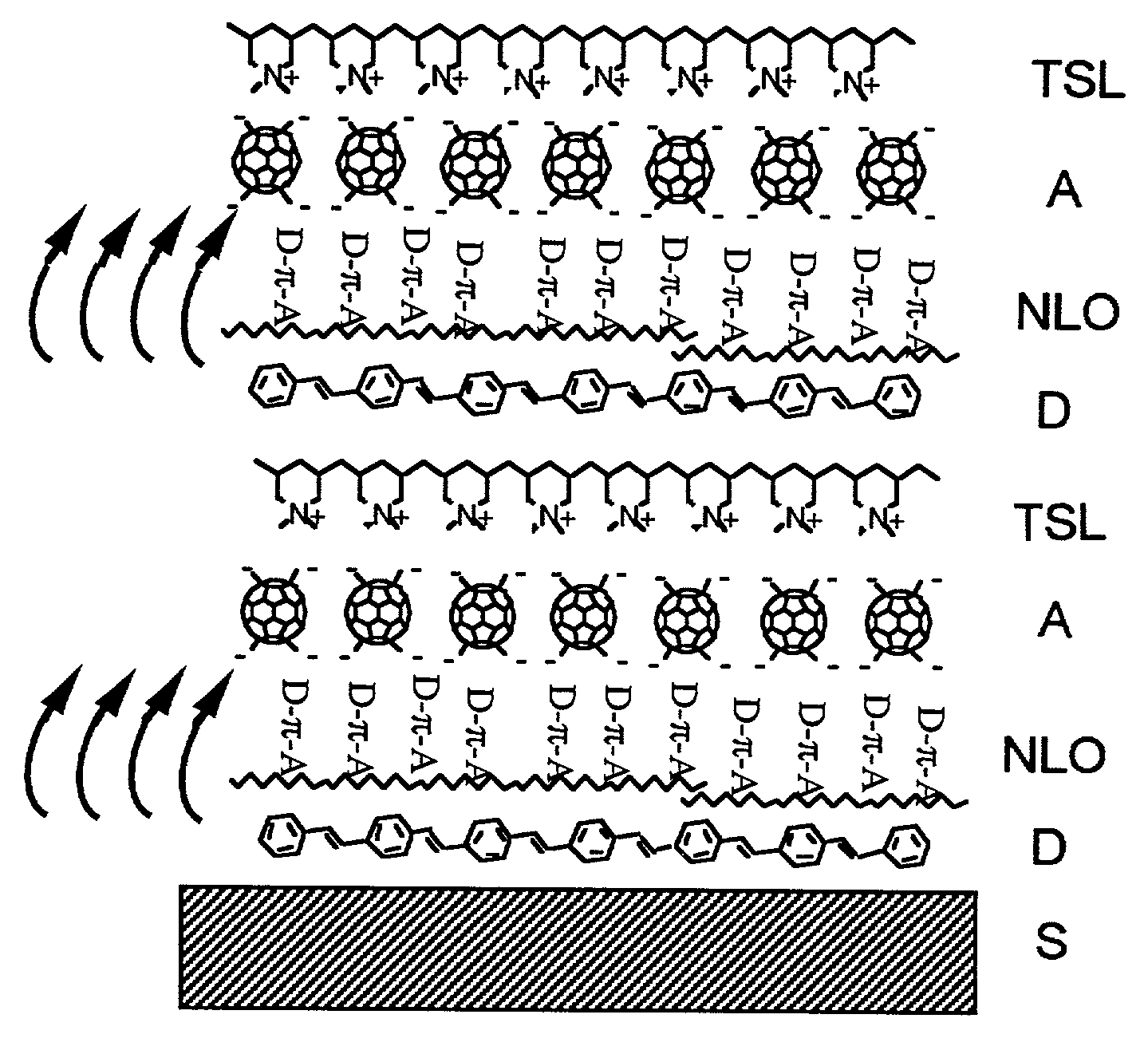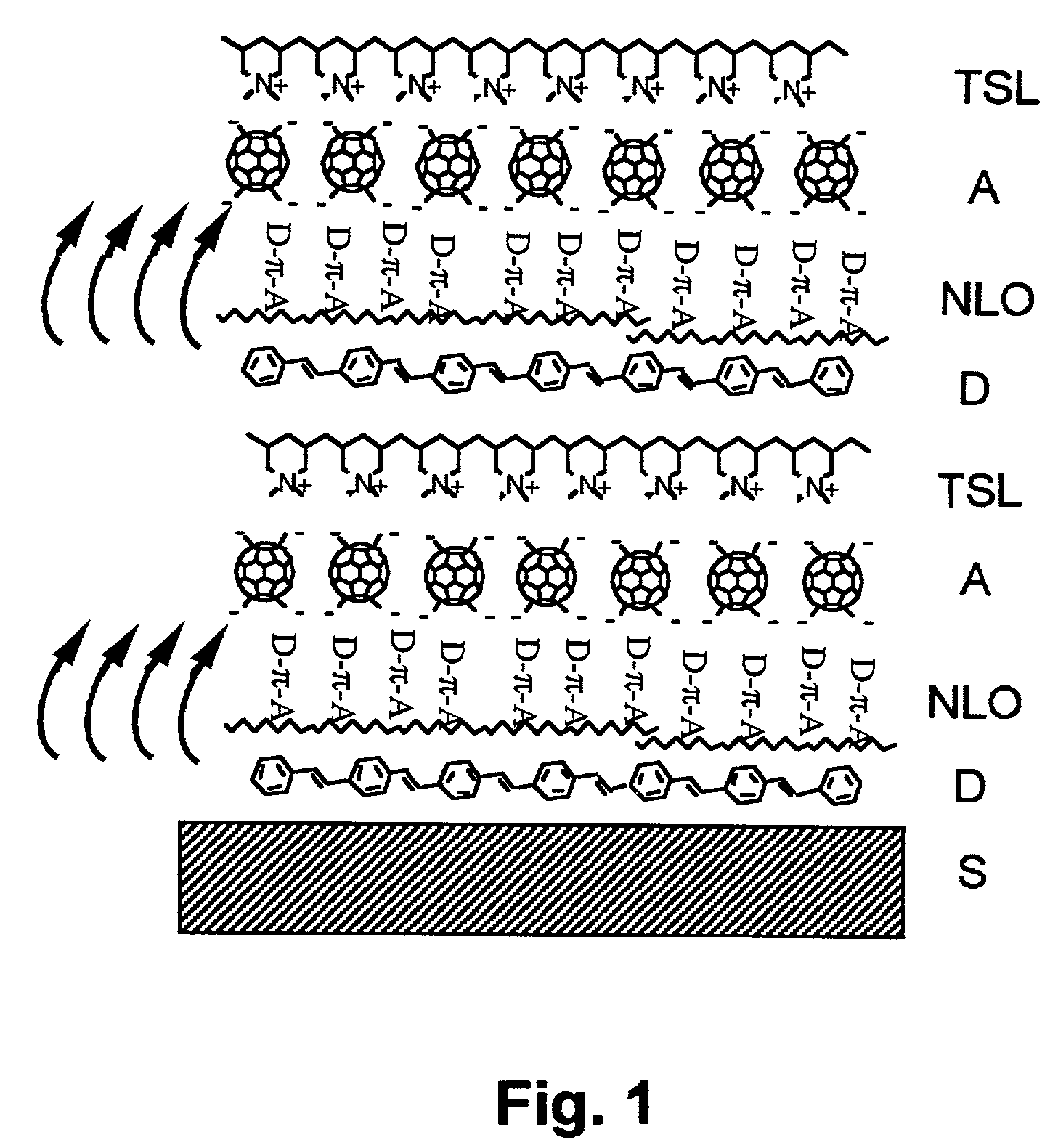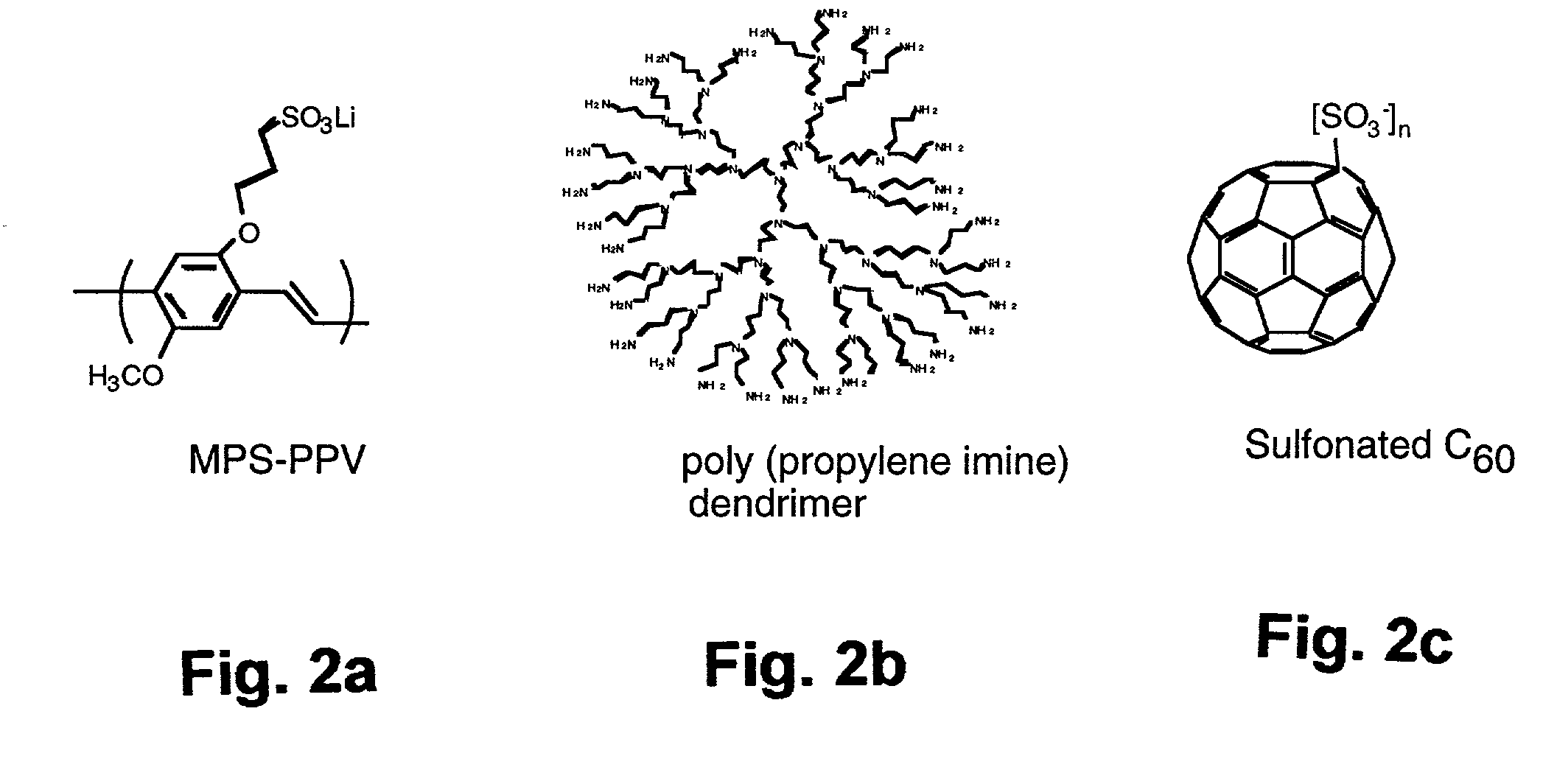Photoinduced charge-transfer materials for nonlinear optical applications
a charge-transfer material and nonlinear optical technology, applied in the field of nonlinear optical materials, can solve the problems of insufficient comparison of relative merits of different materials, inability to achieve maximum diffraction efficiency or response time, and difficulty in making multi-layers having arbitrary thicknesses, etc., and achieve the effect of enhancing the nonlinear optical properties of the nonlinear optical material
- Summary
- Abstract
- Description
- Claims
- Application Information
AI Technical Summary
Benefits of technology
Problems solved by technology
Method used
Image
Examples
example
[0035]The anionic conjugated polymer poly(2,5 methyl-propyloxy sulfonate phenylene vinylene) (MPS-PPV) was synthesized according to well-known synthetic procedures. Cationic and anionic transparent binder compounds, including poly(propylene-imine) dendrimers (generation 3.0), poly(styrene sulfonate) (PSS) and PEI were purchased from Aldrich Chemical Co. and used without further purification. De-ionized water (DI) having >18MΩ resistivity from a Nanopore still was used for all aqueous solutions and rinses. The glass slides were cleaned by first placing them in an H2O2 / H2SO4 (30% / 70%) solution mixture at 80° C. for one hour and then sonicating them in 200 ml of de-ionized water for 30 min. These substrates were later rinsed with pure ethanol to produce hydrophilic surfaces. Concentrations of all polycation and polyanion aqueous solutions were in the range of 10−3 M. Self-assembled multilayer films were made by first immersing the substrate into the polycation solution and then in the ...
PUM
 Login to View More
Login to View More Abstract
Description
Claims
Application Information
 Login to View More
Login to View More - R&D
- Intellectual Property
- Life Sciences
- Materials
- Tech Scout
- Unparalleled Data Quality
- Higher Quality Content
- 60% Fewer Hallucinations
Browse by: Latest US Patents, China's latest patents, Technical Efficacy Thesaurus, Application Domain, Technology Topic, Popular Technical Reports.
© 2025 PatSnap. All rights reserved.Legal|Privacy policy|Modern Slavery Act Transparency Statement|Sitemap|About US| Contact US: help@patsnap.com



